

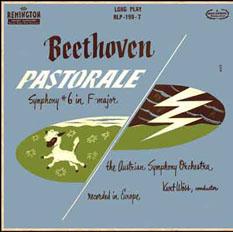
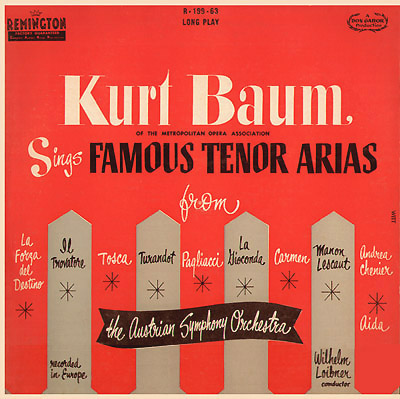


When checking the covers of many Remington records, it seems that Curt John Witt is the artist whose work appears on most of the Remington covers.

In March 1952 Donald Gabor offcially announced that Curt John Witt
was the new art director for Remington Records Inc. Witt surely worked
together with Alex Steinweiss after Steinweiss had designed the
new house style (corporate image) and the basic grid for the covers with
a new logo with the letters REMINGTON in boxes placed on the label in
a circle and in a vertical row at the left side of the cover.

Curt
John Witt also delivered the artwork for many Plymouth and Merit releases
while he was also doing covers for other record labels like Eli Oberstein's
 Allegro
Royale and he worked for the label of
Allegro
Royale and he worked for the label of  Emory
Cook's Binaural Records.
Emory
Cook's Binaural Records.
It
is obvious that the cheaper Plymouth records were only rarely adorned
with elaborate artwork. The covers were kept simple with just a few ornaments.
There are many of those covers which state WITT.
An example of an early Remington cover by Curt John Witt is the edition
of Beethoven's 6th, Pastoral Symphony - conducted by Kurt Wöss -
with the old style reference number RLP-199-7 shown at the top left of
this page. Also at left is the Plymouth-Merit release of Beethoven's 7th
Symphony and at right the Plymouth release of Beethoven's Emperor Concerto
played by pianist Felicitas Karrer.

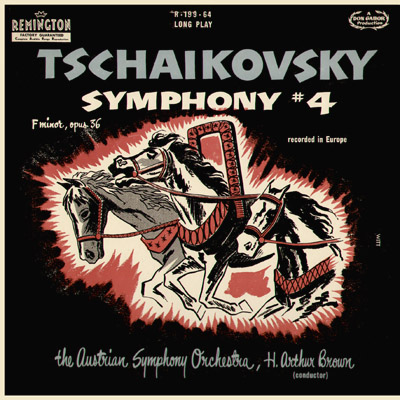

Like Alex Steinweiss, Curt John Witt had a characteristic handwriting as can be seen on many covers. Examples are the covers for Tchaikovsky's Symphony No. 4 with conductor H. Arthur Brown, and Piano Concerto Op. 23 performed by pianist Hermann Schwertmann and conductor Alexander Paulmüller. Witt's handwriting / lettering is more solid and serious, has a remarkable regularity, unlike the light and playful Steinweiss scrawl.


It
is safe to allege that the covers with this writing were styled by Curt
John Witt in case his name is not mentioned. The Plymout/Carmen cover
at left is definitely Witt's.
Also the style of the back of the Remington covers with the liner notes
must have been Witt's lay out. It clearly shows his hand.


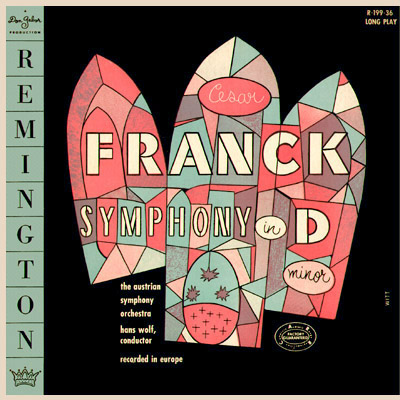

Above the second cover which is by Curt John Witt with a variation on the church windows.
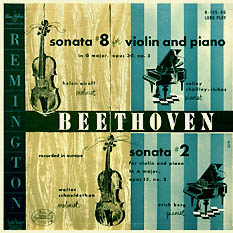


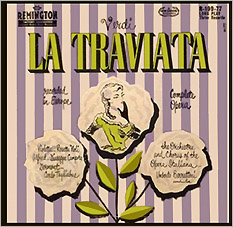



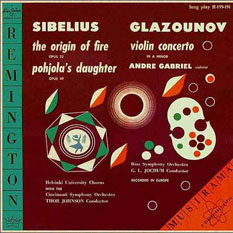
The Origin of Fire and Pohjola's Daughter (Sibelius) was coupled with Glazounov's Violin Concerto (R-199-191) and received a somewhat more elaborate cover.
By then Witt signed his work with his name written as a signature. There are also covers which mention "Curt John Witt Design House". Slonevsky also had "Design House" added to his name. Maybe they were in the same company, or agency. It is not sure if Curt John Witt was the manager/owner of "Design House", or just one of the members.

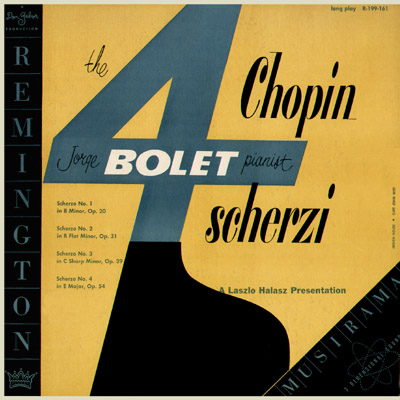
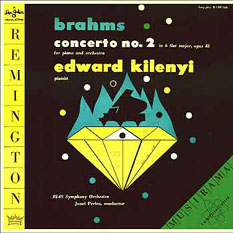
Kilenyi's performance of the Second Concerto of Brahms was on R-199-164.
Curt John Witt's cover for Gershwin's Concerto in F with pianist Alec Templeton illustrates the modernity of the work, the energy, and where it had its roots - R-199-184.
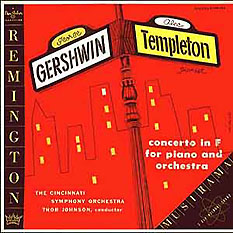
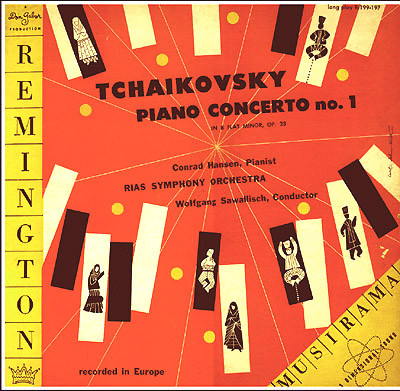

Daring colors for the modern compositions by American Composers Leon Stein and Robert Ward, performed by the Cincinnati Symphony under Thor Johnson - R-199-185.

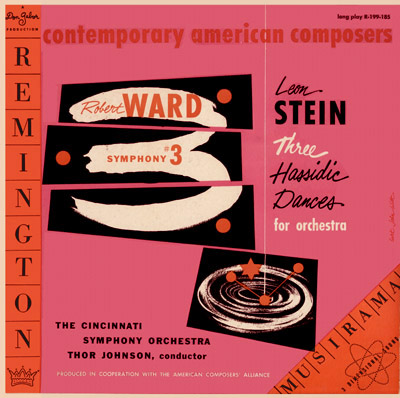




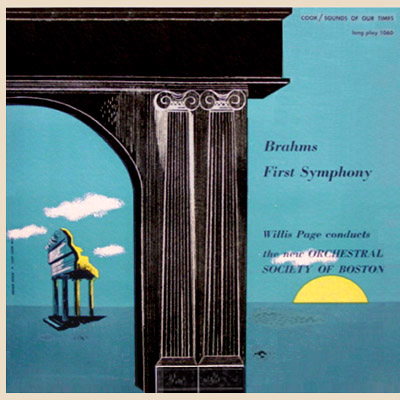

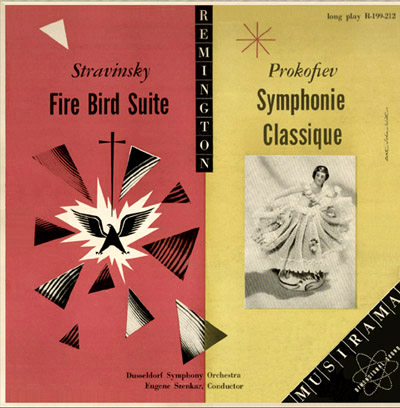

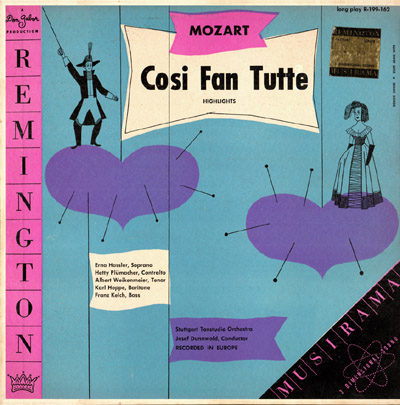
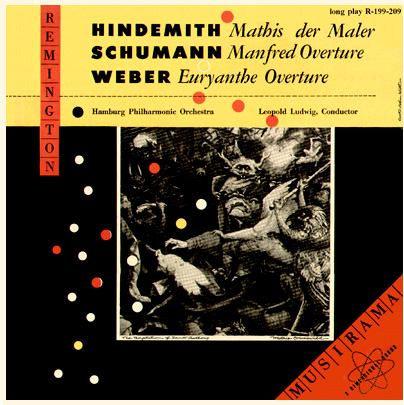
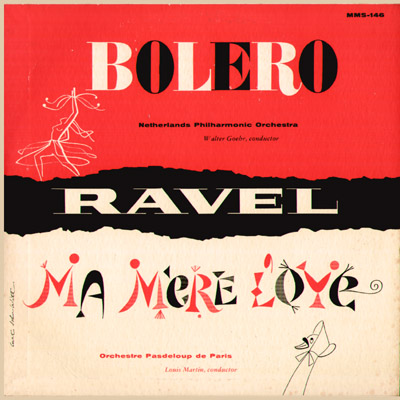
The cover for MMS-146 follows the lay out of the Enesco and Debussy Remington recordings. Walter Goehr conducts the Nethelands Philharmonic Orchestra in Bolero. The Orchestre Pasdeloup de Paris plays Ma mère l'oi with conductor Louis Martin.
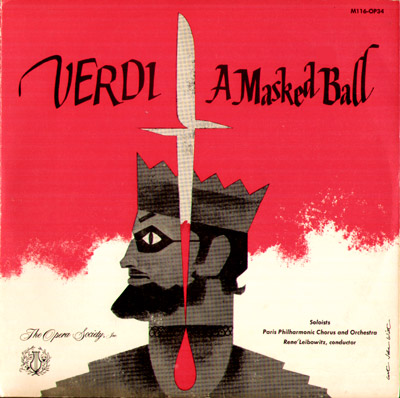
René Leibowitz conducts the Paris Philharmonic Chorus and Orchestra and singers Joachim Kerol, Jean Borthayre, Ethel Semser and others in Guiseppe Verdi's Un ballo in machera - A Masked Ball - on M116-OP34 of the Opera Society.
This page will be expanded.
Copyrigh1995-2008
by Rudolf A. Bruil


